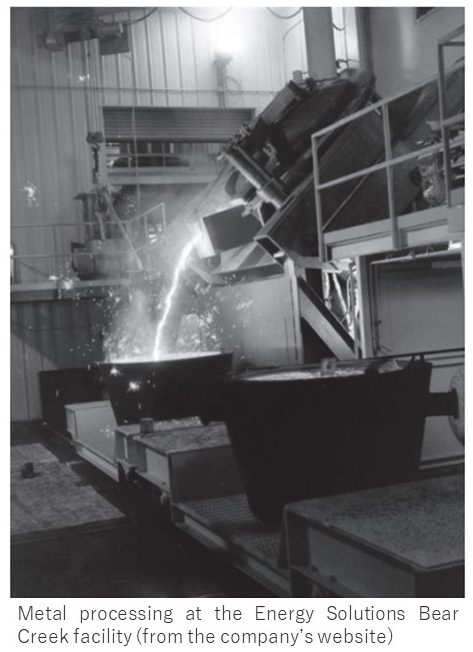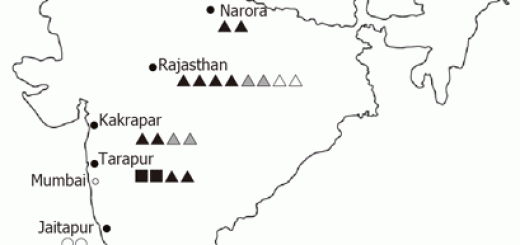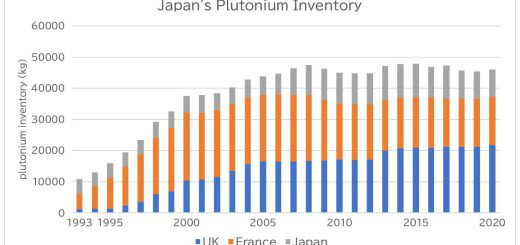Problems of Overseas Melting of Large Metal Equipment Produced during Decommissioning, etc.
By Matsukubo Hajime (CNIC)
Nuclear decommissioning generates large amounts of radioactive waste. Reducing the various types of radioactive waste generated by dismantling nuclear power plants is a major challenge for nuclear operators in terms of reducing the size of disposal sites.
At a meeting of the Nuclear Power Subcommittee on March 22, 2021, the Ministry of Economy, Trade and Industry (METI) explained that large metal equipment such as steam generators and feed-water heaters were taking up space at decommissioning sites, creating a bottleneck for smooth decommissioning, while there were overseas business operators who are “recycling” these kinds of metal equipment. The ministry said “in principle we do not approve” the export of radioactive waste to other countries, but said it would change its policy to allow exceptions only if exports meet criteria such as consent from the recipient country and recycling within the recipient country. This policy was also outlined as a way forward in the April 2019 Nuclear Power Subcommittee. According to the Mainichi Shimbun on December 30, 2021, in April 2021, an assistant secretary of the U.S. Department of Energy is said to have approached a senior METI official regarding the acceptance of this kind of low-level radioactive waste.
The first overseas shipment consisted of six casks (600 tons) used at the Tokai Reprocessing Plant of the Japan Atomic Energy Agency Nuclear Fuel Cycle Engineering Research Institute and the Advanced Thermal Reactor Fugen, which left Japan for the United States in November 2023 and was accepted by the Memphis facility of the Energy Solutions in March 2024.
Melting of Large Metal Equipment
The two companies that recycle large metal equipment are Energy Solutions in the U.S. and Cyclife Sweden, a company in the French EDF group of companies.
These companies use similar methods to melt metals. They first decontaminate equipment surfaces by blasting with water, metal particles, dry ice, and other materials, followed by wiping, to remove radioactive materials. After further dismantling, the metal is melted.  Non-metallic radionuclides are then separated as slag, while metallic radionuclides are dissolved in the molten metal. In the U.S., the destination of the recent export, the processed metal was once supplied for general use, but this was ended in 2000 and the use of the metal is now limited to NASA and nuclear facilities.
Non-metallic radionuclides are then separated as slag, while metallic radionuclides are dissolved in the molten metal. In the U.S., the destination of the recent export, the processed metal was once supplied for general use, but this was ended in 2000 and the use of the metal is now limited to NASA and nuclear facilities.
According to the Electric Power Research Institute (EPRI), metal recycling is not common in the U.S. due to the low cost of low-level radioactive waste disposal.
Further, in the case of the U.S., radioactive waste generated by decontamination and melting is designated for domestic disposal if it is imported as a resource and for return to the country of origin if it is imported as radioactive waste. In the case of Sweden, it is returned to the country of origin. Whether the recent exports to the U.S. were exported as resources or waste is unclear.
In 2010, Energy Solutions planned to import 20,000 tons of low-level radioactive waste from Italy. Of that, one-third was metal, which was exported to Japanese customers to be reused in radiation shielding blocks, and the portion that could not be reused was to be disposed of at the company’s Clive Disposal Site for low-level radioactive waste in Utah. After stiff opposition from the state of Utah and others, however, the plan was scrapped.
In 2022, I visited the Clive Disposal Site, where I was able to see many pieces of large metal equipment being stored out in the open (see photo).  Talking to local people, there is apparently strong opposition to accepting the waste, especially from overseas.
Talking to local people, there is apparently strong opposition to accepting the waste, especially from overseas.
If they are returned to Japan, low-level radioactive materials generated by the decontamination and melting of large metal equipment are to be stored at the plant where they originated. In that case, the business operator dispatching the equipment will be responsible for all disposal and processing from the transport out through to delivery to the low-level radioactive waste facility.
Reinan E-Coast Plan
Formulated by Fukui Prefecture in 2020, the Reinan E-Coast Plan (a plan for regional economic revitalization (Economy) and environment-friendly community development (Ecology) incorporating the expansion of nuclear power R&D and human resource development, the utilization of newly developed experimental and research reactors, responses to decommissioning, as well as the utilization of renewable energy) states as its goal the promotion of the reuse and commercialization of dismantled waste. To promote the project, the Reinan E-Coast Plan Promotion Conference is held each year with the participation of the prefectural government; METI; the Ministry of Education, Culture, Sports, Science and Technology; nuclear power business operators; prefectural industrial circles, and academics from universities in the prefecture. The documents from the 2023 Reinan E-Coast Plan Promotion Conference, held in October 2023, clearly state that the establishment of a central clearance processing facility and the establishment of a company as a nuclear recycling business will be considered, and further that “When the central processing business in fully underway, we will consider expanding the business by adding large equipment waste (such as steam generators, etc.) that have not thus far been processed in Japan, to the wastes handled by the business.”
There is concern that this could lead to an endless proliferation of radioactive waste. We need to pay close attention to both the overseas exports and domestic processing of these waste materials.
* See also Kazuhide Sueda, Planned Centralized Radioactive Waste Processing May Allow Uncontrollable Reuse of Radioactive Waste as “Cleared” Waste (February 9, 2024) (cnic.jp/english/?p=6933).


